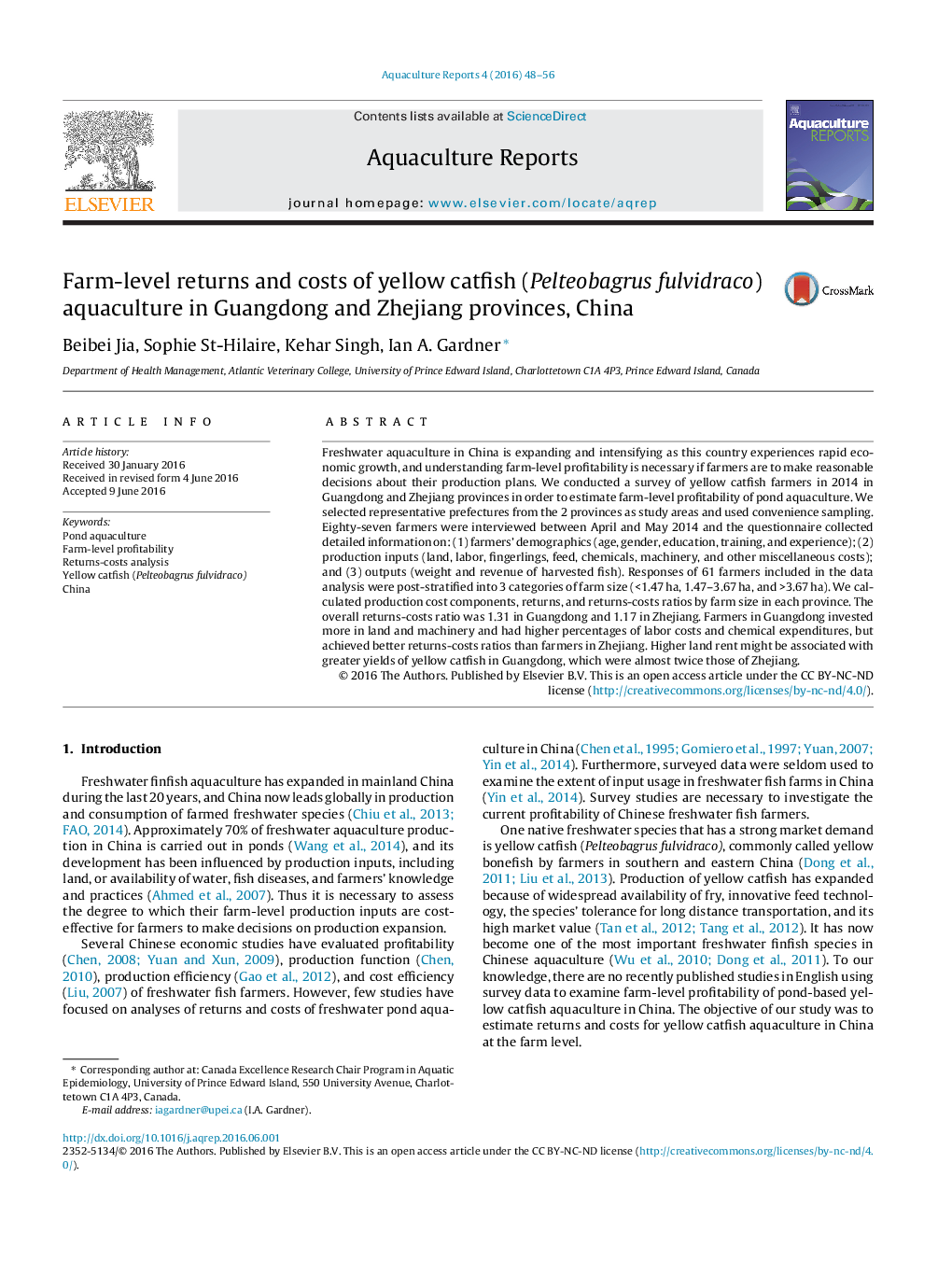| Article ID | Journal | Published Year | Pages | File Type |
|---|---|---|---|---|
| 4437944 | Aquaculture Reports | 2016 | 9 Pages |
•Returns-costs analysis of freshwater pond aquaculture of yellow catfish in 2 Chinese provinces was done using survey data from farmers.•Farmers in Guangdong achieved better returns-costs ratios, even though they spent more money on fixed and variable costs than farmers in Zhejiang.•High feed and land rental costs negatively affected net returns in both provinces, and the market price of fish was also an influential factor in net returns.
Freshwater aquaculture in China is expanding and intensifying as this country experiences rapid economic growth, and understanding farm-level profitability is necessary if farmers are to make reasonable decisions about their production plans. We conducted a survey of yellow catfish farmers in 2014 in Guangdong and Zhejiang provinces in order to estimate farm-level profitability of pond aquaculture. We selected representative prefectures from the 2 provinces as study areas and used convenience sampling. Eighty-seven farmers were interviewed between April and May 2014 and the questionnaire collected detailed information on: (1) farmers’ demographics (age, gender, education, training, and experience); (2) production inputs (land, labor, fingerlings, feed, chemicals, machinery, and other miscellaneous costs); and (3) outputs (weight and revenue of harvested fish). Responses of 61 farmers included in the data analysis were post-stratified into 3 categories of farm size (<1.47 ha, 1.47–3.67 ha, and >3.67 ha). We calculated production cost components, returns, and returns-costs ratios by farm size in each province. The overall returns-costs ratio was 1.31 in Guangdong and 1.17 in Zhejiang. Farmers in Guangdong invested more in land and machinery and had higher percentages of labor costs and chemical expenditures, but achieved better returns-costs ratios than farmers in Zhejiang. Higher land rent might be associated with greater yields of yellow catfish in Guangdong, which were almost twice those of Zhejiang.
